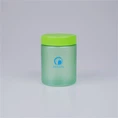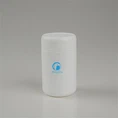Plastic water bottles are convenient, reusable, and widely used in daily life-from sports to travel, from office desks to school bags. But over time, they can develop odors, stains, or bacterial buildup if not cleaned properly. Whether you're using HDPE, PET, or PP plastic bottles, understanding how to clean them effectively is essential for hygiene and long-term use.
Why Cleaning Matters
Plastic bottles often come into contact with beverages, hands, air, and moisture-conditions that create a perfect breeding ground for bacteria and mold. Regular and correct cleaning:
Ensures user health and safety
Prevents unpleasant odors
Extends the usable life of the bottle
Maintains product appearance and performance
Step-by-Step: How to Clean Plastic Water Bottles
1. Daily Rinse with Warm Water
After each use, rinse the bottle with warm (not boiling) water. This helps remove residue and prevents the buildup of bacteria.
Tip: Avoid using hot water over 70°C for regular PET bottles, as excessive heat may deform the shape.
2. Use Mild Dish Soap
Add a few drops of dish soap and fill the bottle halfway with warm water. Close the lid and shake vigorously for 30–60 seconds.
For narrow-mouth bottles, use a long bottle brush to reach all internal surfaces.
For bottles with flip or straw lids, disassemble and clean parts separately.
3. Deep Cleaning with Baking Soda or Vinegar (Weekly)
For thorough cleaning once a week:
Option A: Mix 1 tsp of baking soda with warm water, let it sit for 15 minutes, then rinse.
Option B: Mix 1:1 water and white vinegar, shake and leave overnight. Rinse thoroughly in the morning.
These natural agents help neutralize odors and dissolve buildup without damaging plastic.
4. Disinfection (Monthly or As Needed)
If odor or slime persists:
Soak the bottle in a diluted bleach solution (1 tsp of unscented bleach in 1 liter of water) for 2 minutes.
Rinse at least three times with clean water to ensure no residue remains.
Important: Do not use bleach frequently on colored or printed plastic bottles, as it may affect the appearance or print quality.
What to Avoid
No Boiling Water: Most plastic bottles (especially PET) are not designed to withstand boiling temperatures and may warp.
No Abrasive Scrubbers: These can scratch the bottle's surface, making it harder to clean and easier for bacteria to adhere.
No Dishwasher (unless marked dishwasher-safe): Not all plastics tolerate dishwasher temperatures or detergents.
How Often Should You Clean Plastic Bottles?
| Usage Frequency | Cleaning Method | Recommended Frequency |
|---|---|---|
| Daily use | Warm water + soap | After every use |
| Outdoor use | Baking soda or vinegar | Weekly |
| Long-term reuse | Bleach soak | Monthly or as needed |
Pro Tips for Extended Use
Dry completely: Always let bottles air dry upside down to prevent moisture accumulation.
Inspect regularly: If the bottle develops cracks, warping, or a persistent odor, it's best to replace it.
Choose food-grade materials: Bottles made from HDPE, PET, or BPA-free PP are safer and easier to clean.
















